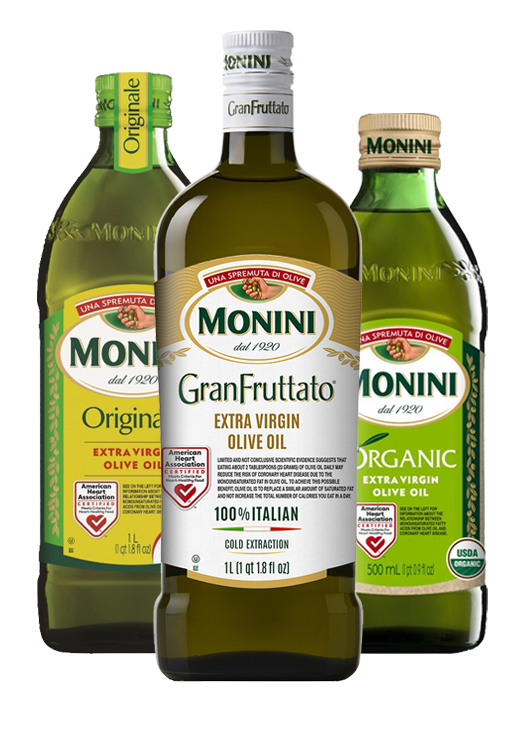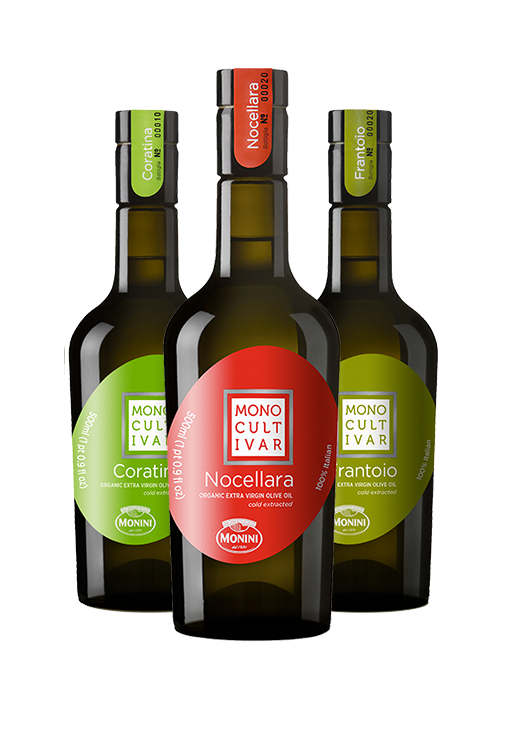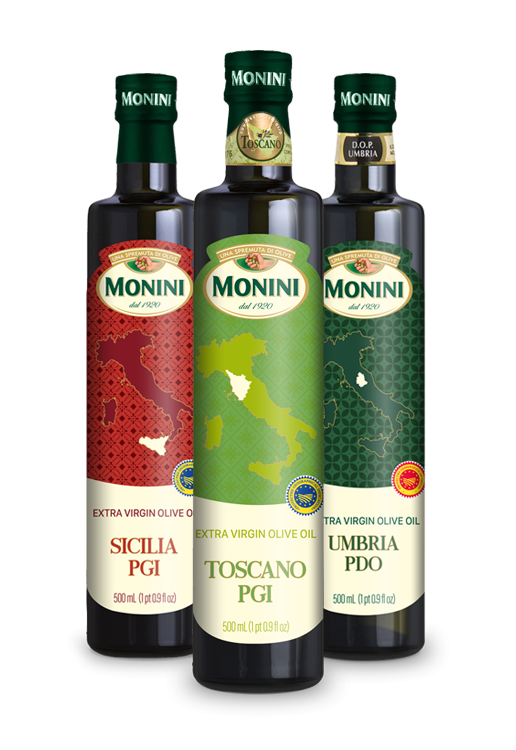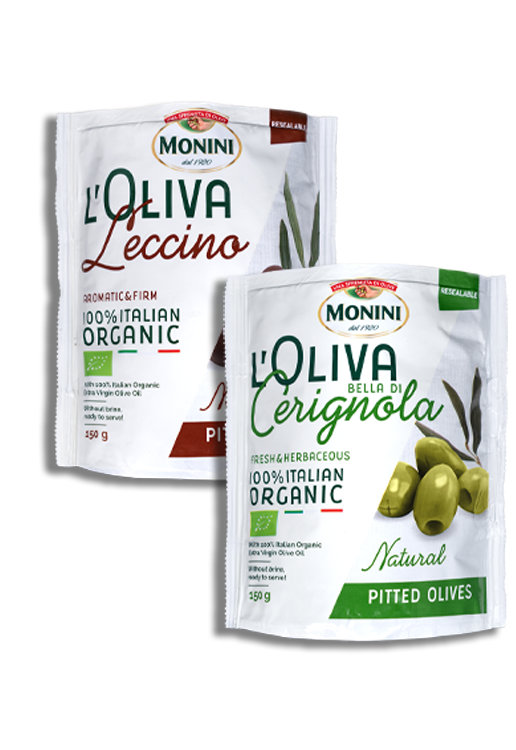THE IMPORTANCE OF PROCESSES
During the ripening phase, called veraison, olives change color several times: from green to yellow, to reddish, to purple, to brown, to black. Each variety has an optimal degree of maturation; extraction during this stage best enhances the oil’s sensory characteristics and achieves the best fragrance and flavor.
Like wine and other natural products, a number of factors can affect an oil’s characteristics from year to year.
For example, the amount of rain that the olive trees may be exposed to during the season can cause significant variations in the bitterness of the resulting oil.
During some critical times of the year, you can notice a number of differences in flavor. In September, for example, all oils are 1 year old; however, within a few days the new oils are produced, and as bottles are filled within a short period of time, the difference between an oil from the previous year and a freshly pressed one can be obvious. Monini strives to minimize these differences by leaving oils with a more intense flavor for the end of the season, and choosing the more delicate ones for the beginning.






